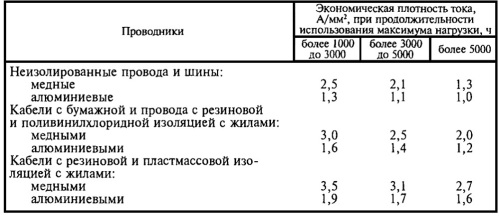Economic current density, selection of cable cross-section by economic current density
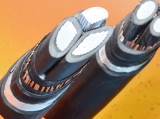 The costs related to the operation of the power transmission systems are divided into several components:
The costs related to the operation of the power transmission systems are divided into several components:
-
the cost of losses in lines and in transformers;
-
depreciation deductions;
-
ongoing repair costs;
-
staff salary.
Loss of energy
The cost of line losses is related to two parameters: the amount of annual losses and the cost per unit of lost electricity. The amount of losses is directly related to the power factor of the load. In fact, with the same active power consumption, the current in the line turns out to be inversely proportional to the power factor, therefore the power loss will be inversely proportional to the square of the power factor:

So, to reduce the active losses in the lines, it is necessary to increase the load power factor if possible. In particular, the transformers must be fully loaded and the motors must not run without load.Often, to increase the power factor of transformers and motors, it is enough to install compensating capacitors near the consumer, to install a reactive power compensation system.
Depreciation expense
Regarding the depreciation charges, they are related to the initial capital costs and the life of the line. It contains deductions for improvements with full recovery of fixed assets and for capital repairs. Amortization charge as a percentage of the original cost of the line is determined as a percentage of the original cost. And that full price must be paid back for the rest of her life. Percentage depreciation deductions are determined by the following formula:

Ongoing repair costs
Usually these costs are a minimal part of the original cost of the lines. In terms of rural networks, this is only a few percent of the initial cost.
Staff salary
Linemen serving substations, technical engineers, administrative workers, etc. everyone needs a salary. So this component is added to the annual operating costs. As a result, the operating costs of electricity transmission for the year will be:
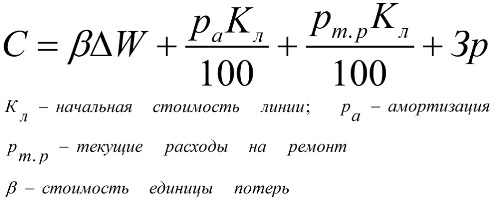
Economic efficiency can be estimated by the expected reduced costs:
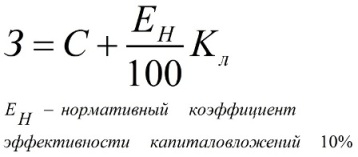
The role of conductor size
Even at the design stage, it is necessary to achieve such conditions so that this indicator (estimated reduced costs) is the lowest. And here it is simply very important to choose the optimal cross-section of the wire.
If the section is increased, the cost of electricity losses will decrease with a hyperbola.But the cost of the line itself will increase in a straight line. That is, the deductions depending on the initial costs will also increase linearly.
The costs associated with maintenance and wages are almost unrelated to the cross-section of the wires and can be neglected. And in the end, the value of the expected reduced costs, without taking into account the maintenance costs, you can graphically depict a curve that will be the sum of the costs of electricity losses and operating costs.
The minimum value of this curve will correspond exactly to the optimal, so-called. Economical cross-section of the line conductor.
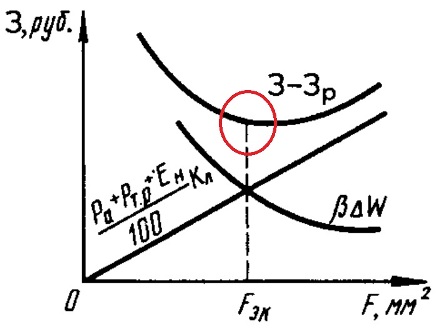
The fact that the correct economic cross-section of the conductor is chosen indicates that the line is designed in the most optimal way and the expected reduced costs under such conditions will be as low as possible.
In the design process of each line, it is necessary to calculate the economical cross-section of the wire, considering various options. But in practice this is rarely done. The minimum of the displayed graph is not an exact value, the graph is flat, so they often try to choose the wire(s) with the smallest cross-section to save money.
According to PUE, the economic current density is chosen based on several criteria: depending on what metal of the conductor is used (copper or aluminum), what insulation it will be (rubber, PVC, combined) and whether it will be at all, how many hours it will be of maximum load, an economical current density is selected. There is a table for that. And the economic cross-section based on a certain current density can be easily found by the formula:

This is how cross-sections are selected for power lines with voltages from 35 to 220 kV. Computational operations are simple.
For a line with several different loads, the fact is taken into account that each section of the line must have its own economic current density, and the cross-section is either the same along the entire line, or in each section its own. Again for each site use the formula:

The power loss in a line with a single load is determined by the formula:
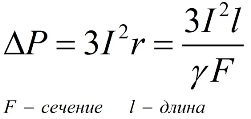
If the line has several loads and the wire is chosen everywhere with the same cross-section, then the power losses will be equal:
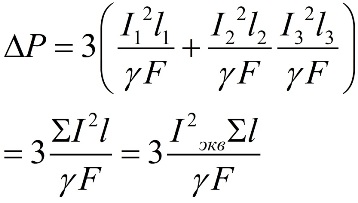
To find a constant cross-section for several loads, based on the equivalent current, first find the equivalent current:

Then the economic cross-section is calculated based on the value of the economic current:

The easiest way is to build a line from the same section along the entire length, but then you have to put up with the fact that energy losses and material costs will be greater than with the individual selection of sections for each specific section.
In rural areas, for overhead lines with a voltage of 10 kV, they resort to one of three methods of selecting a section:
-
Based on economic current density;
-
According to the basic principle of building networks with a voltage of 10 kV, when the main one is made of steel-aluminum wires with a cross section of 70 sq.mm, and to transformer substations 10 / 0.4 kV-unlocking at least AC35.
-
According to the principle of minimum cost, when for each current value, a wire with a suitable cross-section is selected, and the reduced costs are obtained as small as possible.
According to the graphs of the dependence of the total reduced costs on the calculated power, shown for different sections of one figure, the optimal conductor is selected. Overlapping graphs provide insight into a limited range of economic burdens.
In addition, the selection is adjusted according to the mechanical strength and taking into account the standardized deviations of the stress by the user. The economic current density for overhead lines with a voltage of 380 volts in rural electrical networks should traditionally be in the range of 0.5 to 0.7 A / sq.mm, and the cross-section of the wire is selected based on this requirement. Then check the allowable voltage drop. All sections of the line are made of full-phase, and the cross-section of the aluminum wires should not be lower than 50 sq. Mm.

